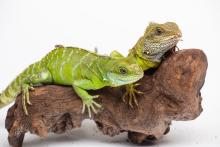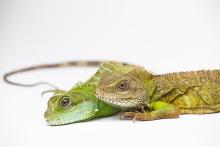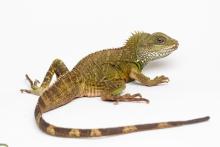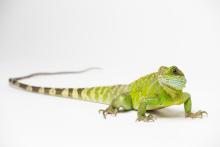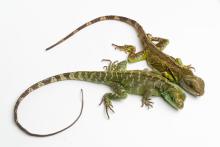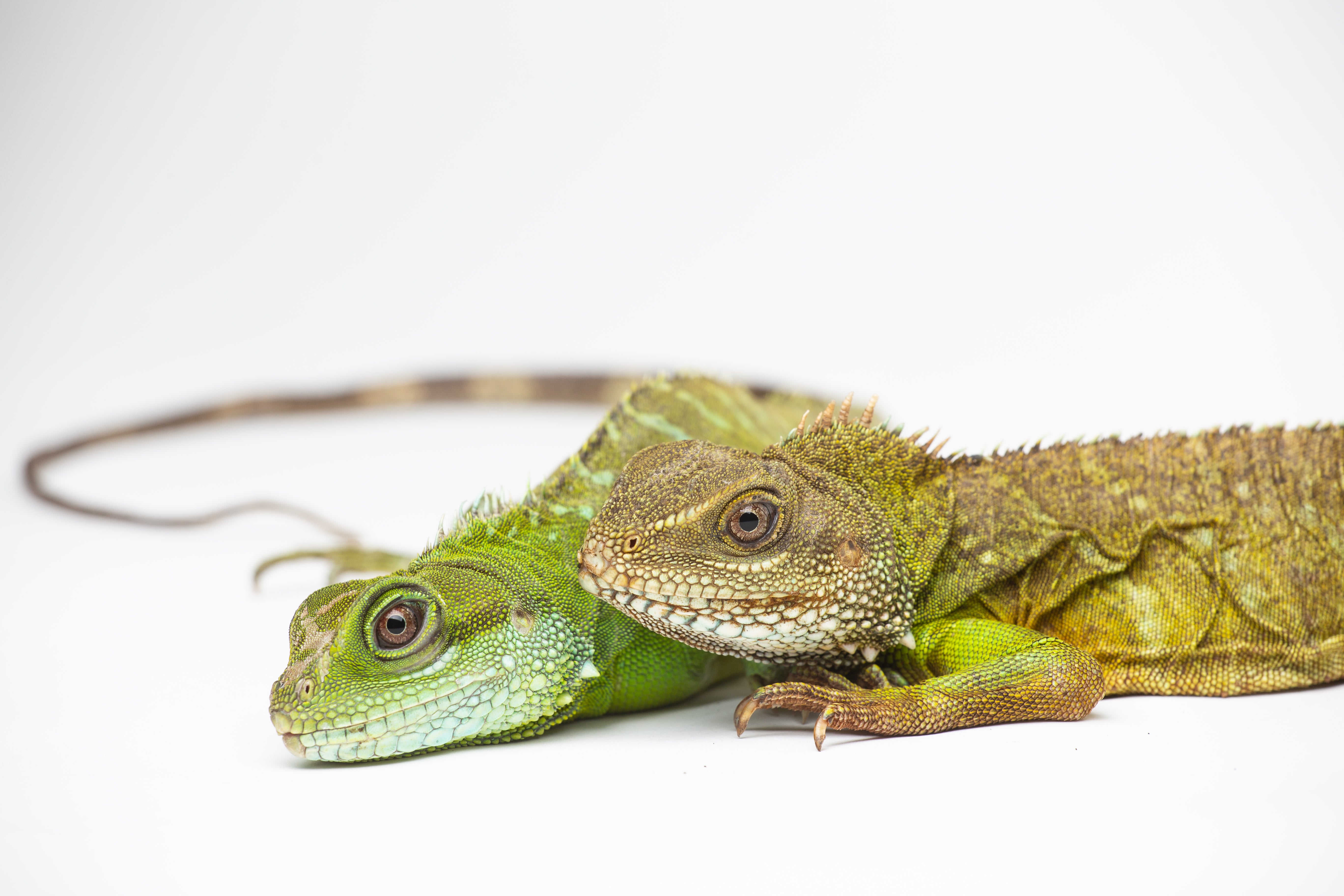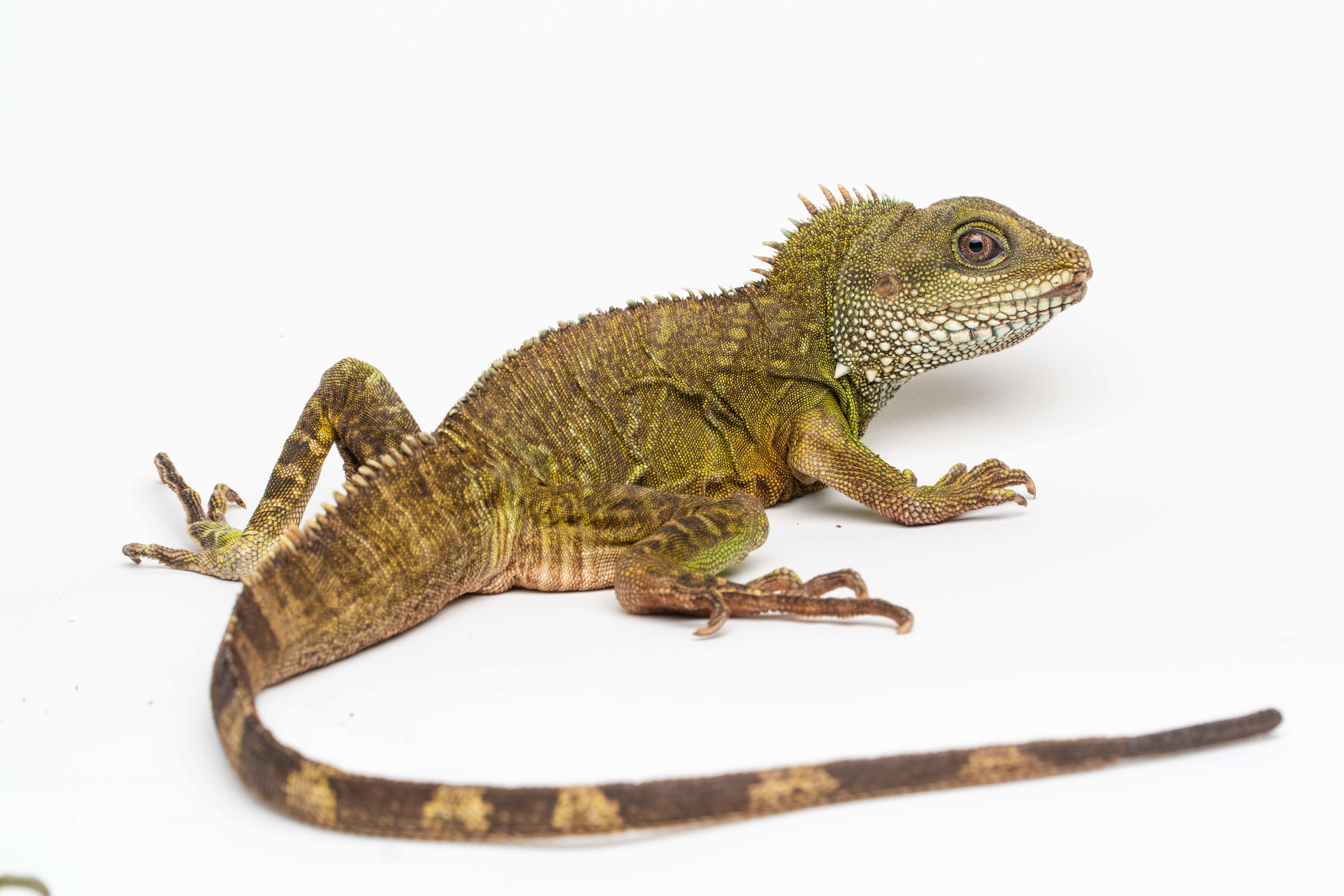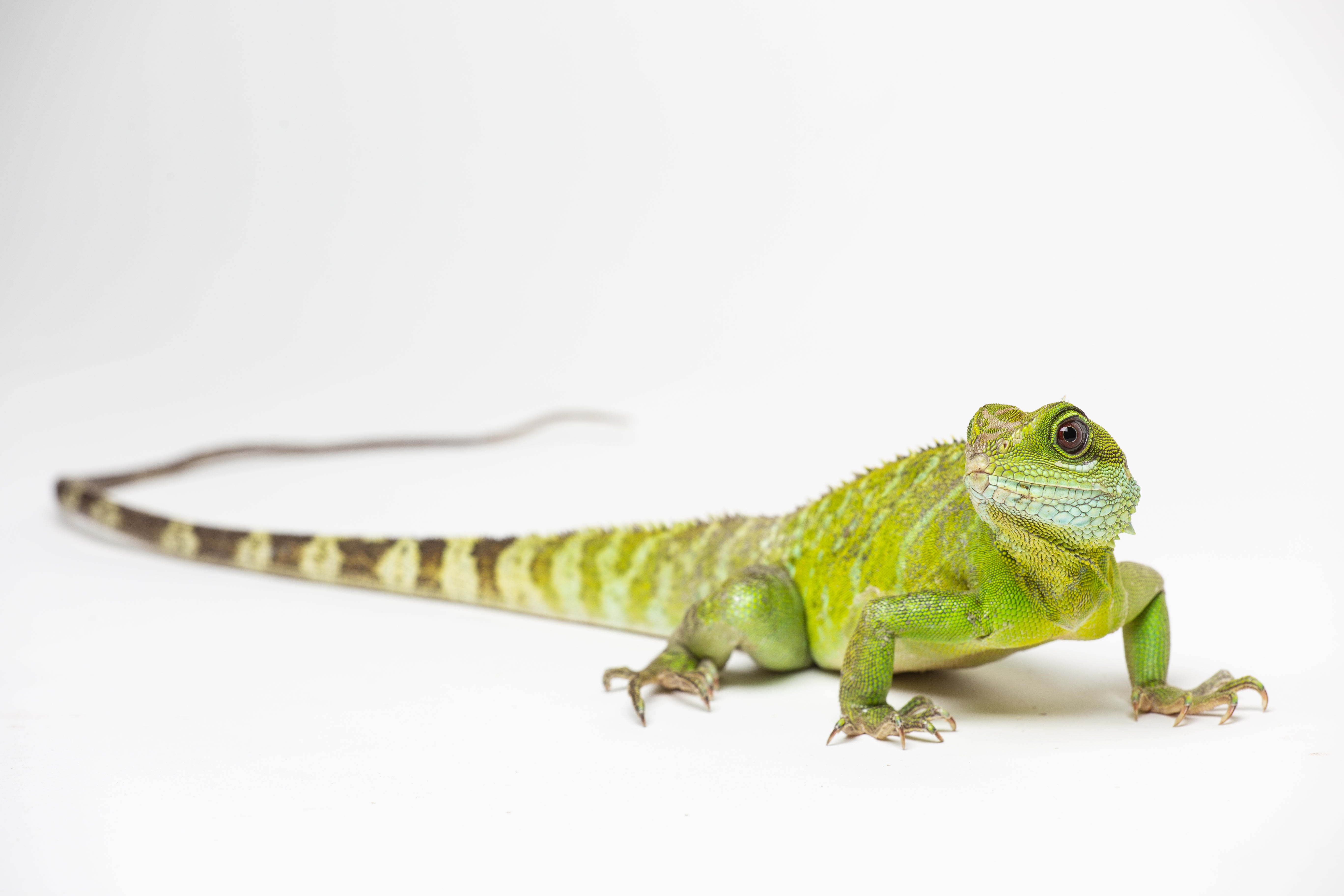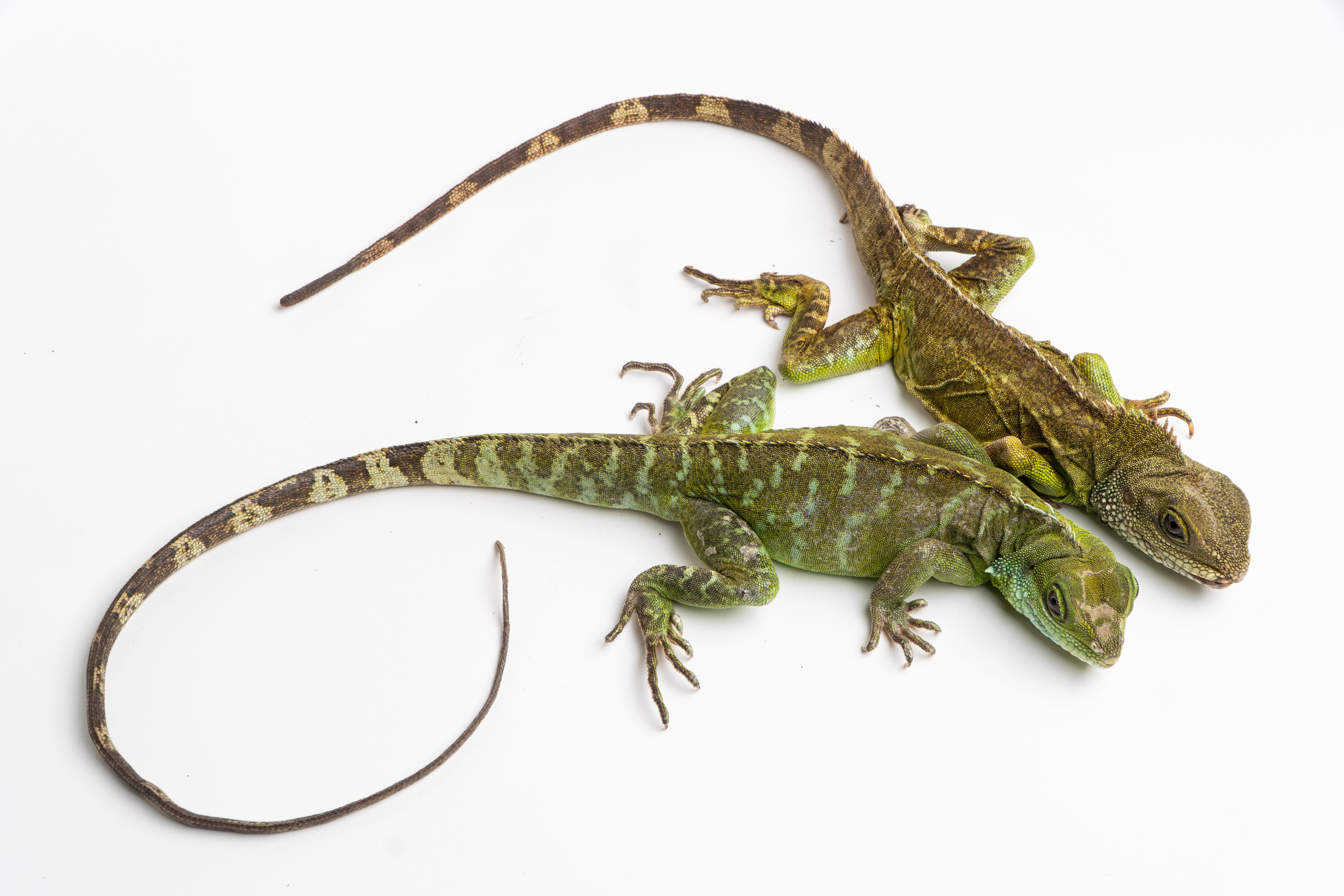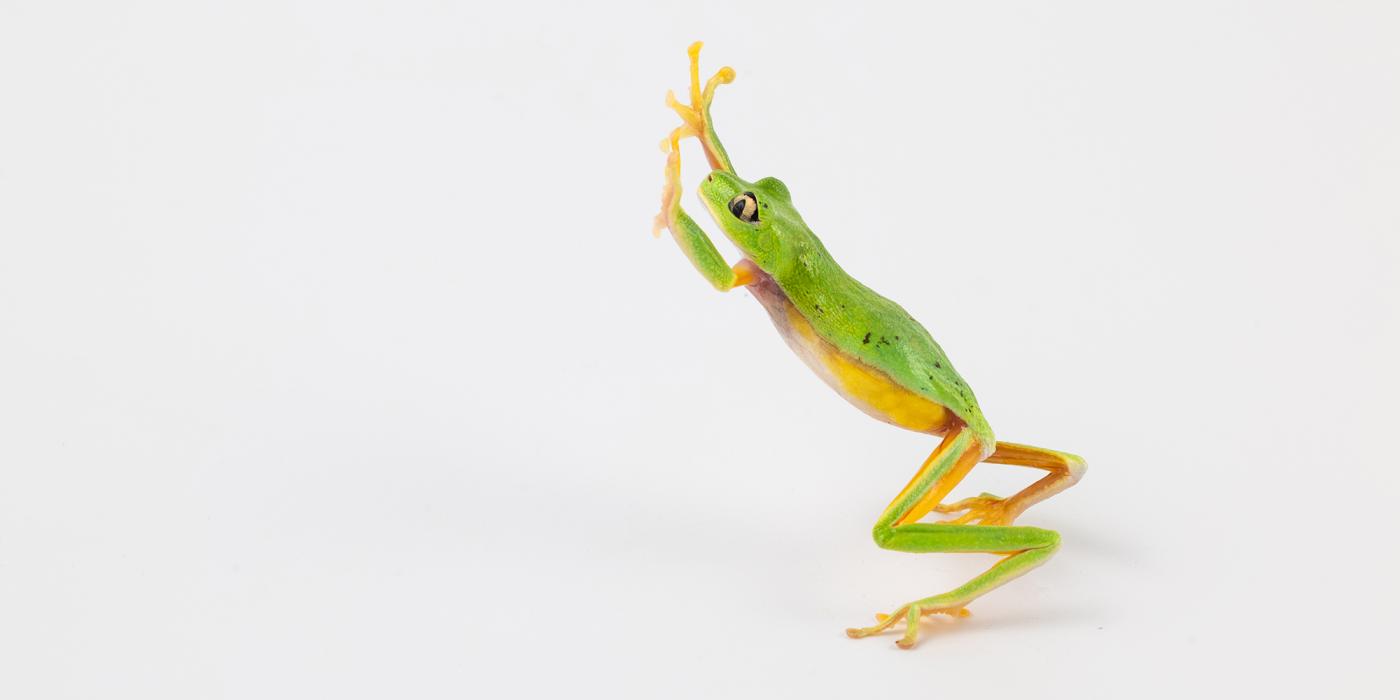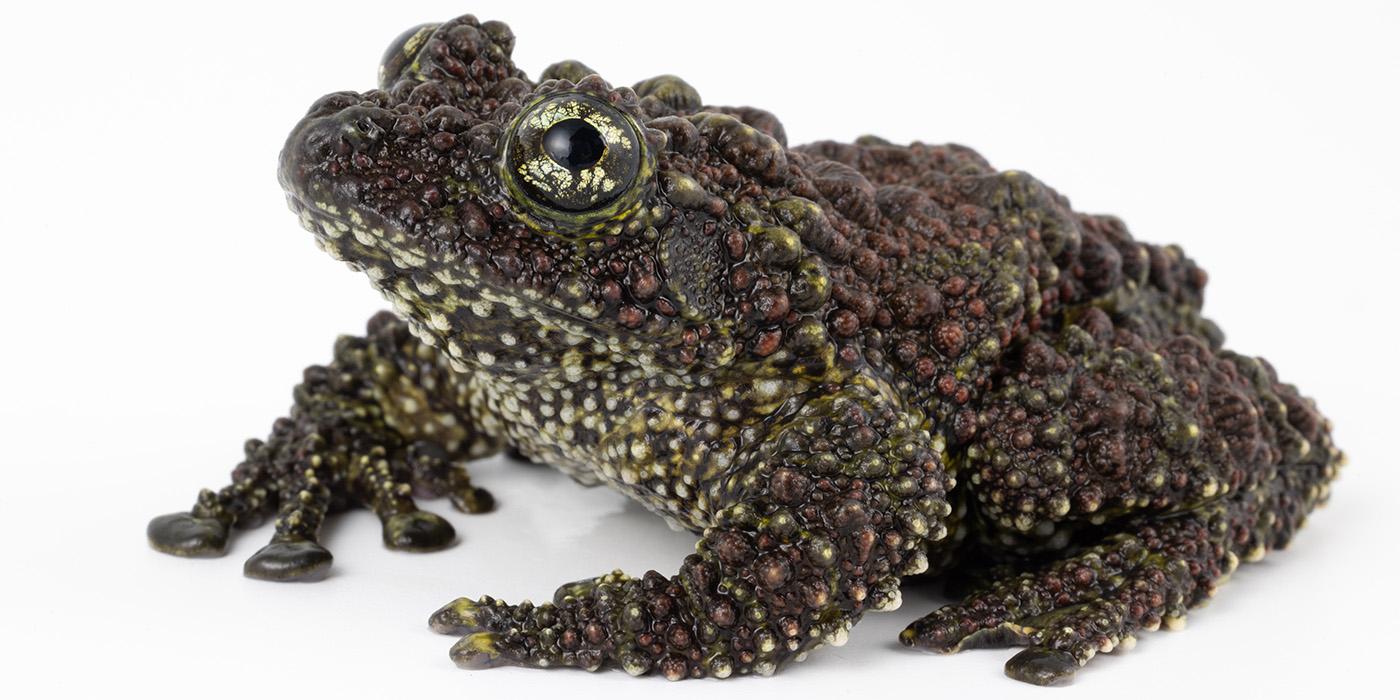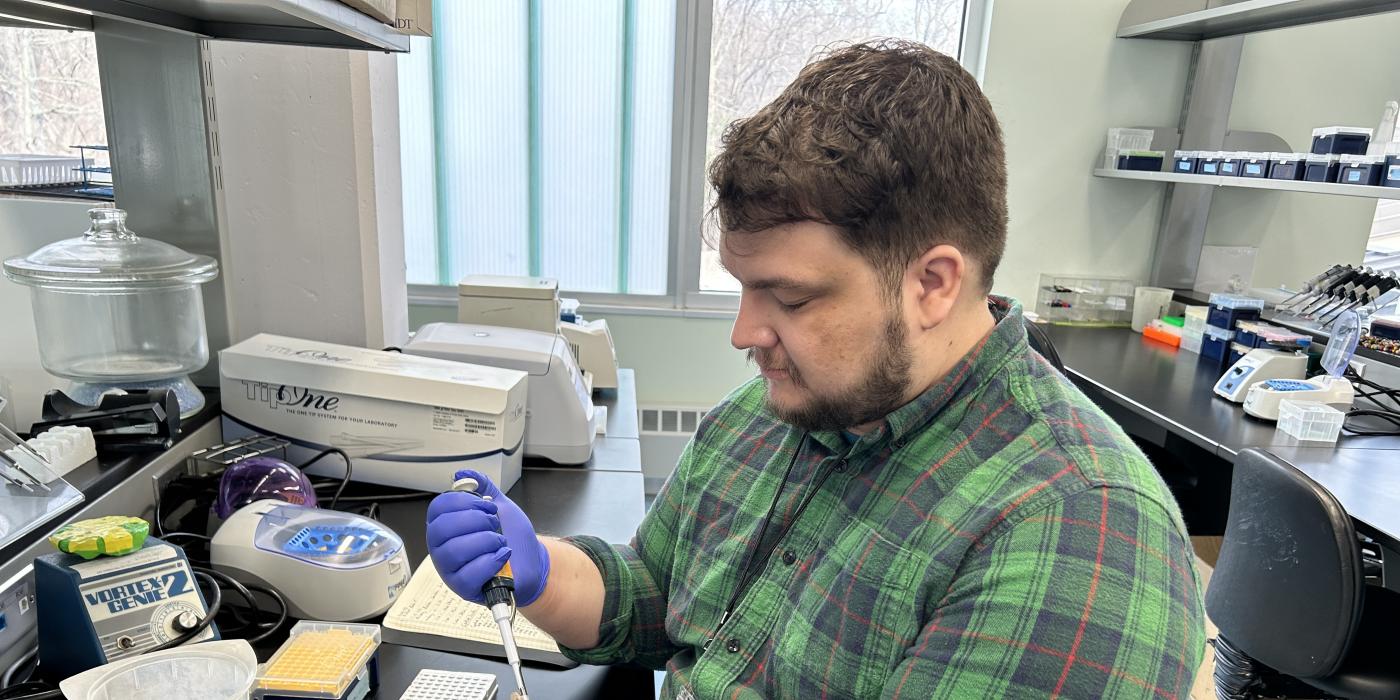Scientists Confirm Facultative Parthenogenesis in Smithsonian’s National Zoo’s Asian Water Dragon
Life found a way at Smithsonian’s National Zoo, where a female Asian water dragon at the Reptile Discovery Center underwent facultative parthenogenesis—that is, she reproduced and contributed a healthy, thriving offspring to her species despite never breeding with a male or receiving genetic material. With DNA samples supplied by animal keepers, scientists at the Smithsonian Conservation Biology Institute’s (SCBI) Center for Conservation Genomics are the first to confirm parthenogenesis in this species. Along with partners from the St. Louis Zoo in Missouri and the University of the Sunshine Coast in Australia, Smithsonian's National Zoo and Conservation Biology Institute staff published their findings in a PLOS ONE paper June 5.
“These scientific discoveries are always very exciting, and having the opportunity to confirm parthenogenesis at all is really cool,” said Kyle Miller, animal keeper at the Reptile Discovery Center and lead author on the paper. “We are fortunate at Smithsonian’s National Zoo to have a Genetics Laboratory and a team of scientists who are just as excited as the animal care team to conduct these kinds of analyses. We are just scratching the surface with parthenogenesis in snakes and lizards that primarily reproduce sexually. Advances in technology continue to take research to new heights, and I hope our work inspires other zoos to pursue these types of projects.”
The mother Asian water dragon came to the Zoo in November 2006 from the St. Louis Zoo when she was four months old. The Zoo never intended to breed her; rather, the plan was for her to be an animal ambassador, demonstrating the biology and behavior of the species to staff and visitors.
Female water dragons and other members of the Agamid family have been documented laying infertile eggs if they have not bred with a male. When the female Asian water dragon began producing eggs in 2009, Reptile Discover Center keepers discarded them per infertile egg protocol. In 2015, keepers requested to incubate all eggs laid by female reptiles that were not bred as part of a study exploring fertility via sperm storage and parthenogenesis.
After two weeks of incubating the first clutch of eggs, keepers candled them by holding each one up to a light. This process revealed veins, a telltale sign that the eggs were fertile and embryos were developing. Although the embryos in the first two clutches did not survive, they were fully developed inside the eggs. A breakthrough came with the third clutch, when a female hatchling emerged from her shell Aug. 24, 2016. Keepers obtained a DNA swab from inside her cheek and sent it to scientists in the Center for Conservation Genomics, along with tissue and blood samples from the deceased embryos. A second Asian water dragon from the same mother hatched Nov. 21, 2018, but it later died due to a blockage in its gastrointestinal tract.
To confirm parthenogenesis, the Center for Conservation Genomics team obtained a DNA sample from the mother and sequenced a part of her genome. They searched her DNA sequences looking for microsatellite marker genes—repetitions in DNA that they could use to determine the relatedness between the mom-offspring pair. Initially, the team tried to use DNA markers from another species of water dragon that was native to Australia; however, it turned out to be very distantly related to the Asian water dragon. Therefore, the team developed new markers to have sufficient statistical power to test the hypothesis of parthenogenesis.
From the tens of thousands of microsatellites generated, they selected 14 for their analysis. Of those, six had two different gene copies, or alleles, in the mother. They found each offspring had only one allele, and it matched one of the two from the mother. “The question we wanted to confirm was whether the Asian water dragon’s offspring had genetic material from only one parent—mom—or two parents—mom and a mystery male,” said Robert Fleischer, head of SCBI’s Center for Conservation Genomics and an author on the paper. “In all of our tests, we found that the daughter only had one allele. If egg and sperm fusion had occurred, the offspring would have two alleles. It was very clear to us that the mother’s eggs were developing directly into offspring without assistance from a male.”In parthenogenesis, the offspring are not genetically identical to the mother, as they have only one of her two gene copies. Though rare, mutations can also occur. The offspring of a parthenogenic parent are not always female; there is a possibility that they could be male.
Animal keepers and SCBI scientists are interested to see if the Asian water dragon offspring, now 2 years old, will be able to produce offspring of her own or with a future mate. Typically, this species begins producing eggs around 3 years of age. Keepers will monitor any eggs the daughter produces in future for signs of fertility, though they caution that some females do not lay eggs at all when a male is not present. Zoo visitors can see the 2-year-old female on exhibit at the Reptile Discovery Center.
Asian water dragons—also called Thai, Chinese or green water dragons—are commonly found throughout their native habitats in Thailand, Vietnam, Cambodia, Laos, Myanmar and Southern China. This species sports a long, banded tail that is used for balance and leverage when climbing and as a whip-like defense against predators. Their moniker comes from another defense strategy; these lizards will enter the water and swim away from danger or submerge themselves completely. They can hold their breath for up to 25 minutes.
The Smithsonian Conservation Biology Institute plays a leading role in the Smithsonian’s global efforts to save wildlife species from extinction and train future generations of conservationists. SCBI spearheads research programs at its headquarters in Front Royal, Virginia, the Smithsonian’s National Zoo in Washington, D.C., and at field research stations and training sites worldwide. SCBI scientists tackle some of today’s most complex conservation challenges by applying and sharing what they learn about animal behavior and reproduction, ecology, genetics, migration and conservation sustainability.
The paper’s additional authors are Susette Castañeda Rico, Carly R. Muletz-Wolz, Michael G. Campana and Nancy McInerney, SCBI; Alan Peters, Smithsonian’s National Zoo; Lauren Augustine, St. Louis Zoo; and Celine Frere, University of the Sunshine Coast.
# # #
Photo Caption: The Smithsonian’s National Zoo was the first to confirm facultative parthenogenesis in Asian water dragons, a species of lizard. A female Asian water dragon (left) hatched August 2016 and is the only surviving offspring of her 12-year-old mother (right).
Photo Credit: Skip Brown, Smithsonian’s National Zoo
Related Species:
Image Gallery
